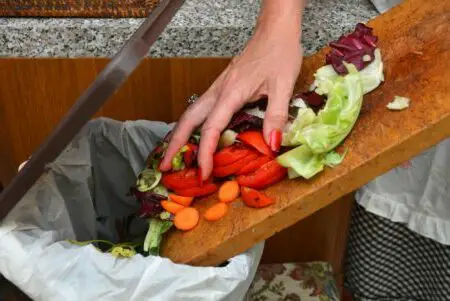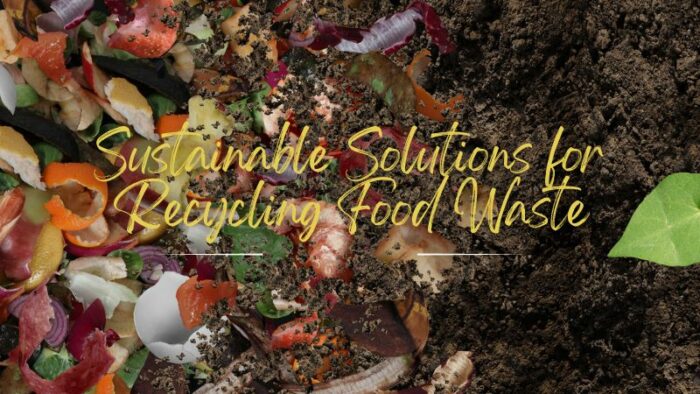It is generally a good idea to recycle food waste whenever possible. There are several ways to do this, including composting, anaerobic digestion, and vermicomposting.
Composting breaks down organic material, such as food waste, into a rich soil amendment called compost. This can be done at home or at a local composting facility. Composting food waste helps to reduce the amount of waste that goes into landfills, where it can produce methane, a potent greenhouse gas.
Anaerobic digestion is a process that uses microorganisms to break down organic material in the absence of oxygen. This process produces biogas, which can be used as a renewable energy source.
Vermicomposting is a composting that uses worms to break down organic material. This method is often used in small spaces or indoors, as it produces a nutrient-rich compost that can be used to fertilize plants.
In many communities, there are options for recycling food waste through municipal composting programs or private companies that offer food waste pickup services. It is always a good idea to check with local authorities or waste management companies to see what options are available in your area.
Composting
Composting breaks down organic material, such as food waste and yard trimmings, into a rich soil amendment called compost. It is a natural process that occurs when organic material is exposed to air, water, and microorganisms.
There are several ways to compost at home, including:
- Backyard composting involves building a compost pile or bin in your yard and adding organic material. The pile should be moistened and turned occasionally to allow air to circulate, which will help to speed up the decomposition process.
- Indoor composting: This can be done using a composting bin or tumbler, a container that can be rotated to mix the compost. Indoor composting is a good option for people who live in apartments or do not have a yard.
Composting food waste helps to reduce the amount of waste that goes into landfills, where it can produce methane, a potent greenhouse gas. It also produces a rich, nutrient-rich soil amendment that can be used in gardens and landscaping.

Anaerobic Digestion
Anaerobic digestion is a process that uses microorganisms to break down organic material, such as food waste, in the absence of oxygen. This process occurs in a sealed vessel or tank called an anaerobic digester. The organic material is mixed with water to create a slurry, which is then introduced into the anaerobic digester.
Inside the anaerobic digester, microorganisms consume the organic material and produce biogas, a mixture of methane and carbon dioxide. The biogas can be captured and used as a renewable energy source. It can be burned to generate electricity or heat or converted into transportation fuel, such as compressed natural gas (CNG).
In addition to biogas, anaerobic digestion produces a nutrient-rich byproduct called digestate. This can be used as a fertilizing agent for crops or as a soil amendment.
Anaerobic digestion is a sustainable waste management solution that helps to reduce the amount of organic material that goes into landfills, where it can produce methane, a potent greenhouse gas. It also helps to reduce the demand for fossil fuels, as biogas can be used as a renewable energy source.
Vermicomposting
Vermicomposting is a composting that uses worms to break down organic material. A sustainable waste management method converts food waste and other organic materials into a nutrient-rich soil amendment called vermicompost.
To start a vermicomposting system, you will need a container, worms, and bedding material. The worms, typically red or earthworms, will consume the organic material and produce vermicompost as a byproduct. The bedding material, which can be made of shredded newspaper or coconut coir, provides a habitat for the worms and helps maintain the container’s moisture and temperature levels.
Vermicomposting is a good option for people who live in small spaces or do not have access to a yard, as it can be done indoors. It is also a useful way to recycle food waste, as it helps to reduce the amount of waste that goes into landfills, where it can produce methane, a potent greenhouse gas.
Vermicompost is a nutrient-rich soil amendment that can be used to fertilize plants and improve soil structure. It is often used in organic gardening and landscaping.
Conclusion
Recycling food waste through methods such as composting, anaerobic digestion, and vermicomposting is a sustainable way to manage waste and reduce the amount of organic material that goes into landfills. These methods help reduce greenhouse gas emissions and produce valuable products, such as compost, biogas, and vermicompost, that can be used in various applications.
Composting is breaking down organic material into a soil amendment called compost. It can be done at home or a local composting facility and is an excellent way to recycle food waste and yard trimmings.
Anaerobic digestion is a process that uses microorganisms to break down organic material in the absence of oxygen. It produces biogas, which can be used as a renewable energy source, and a nutrient-rich byproduct called digestate.
Vermicomposting is a composting that uses worms to break down organic material. It produces a nutrient-rich soil amendment called vermicompost, which can be used to fertilize plants and improve soil structure.
Overall, recycling food waste through these methods can help to reduce waste and support sustainable practices in waste management.

